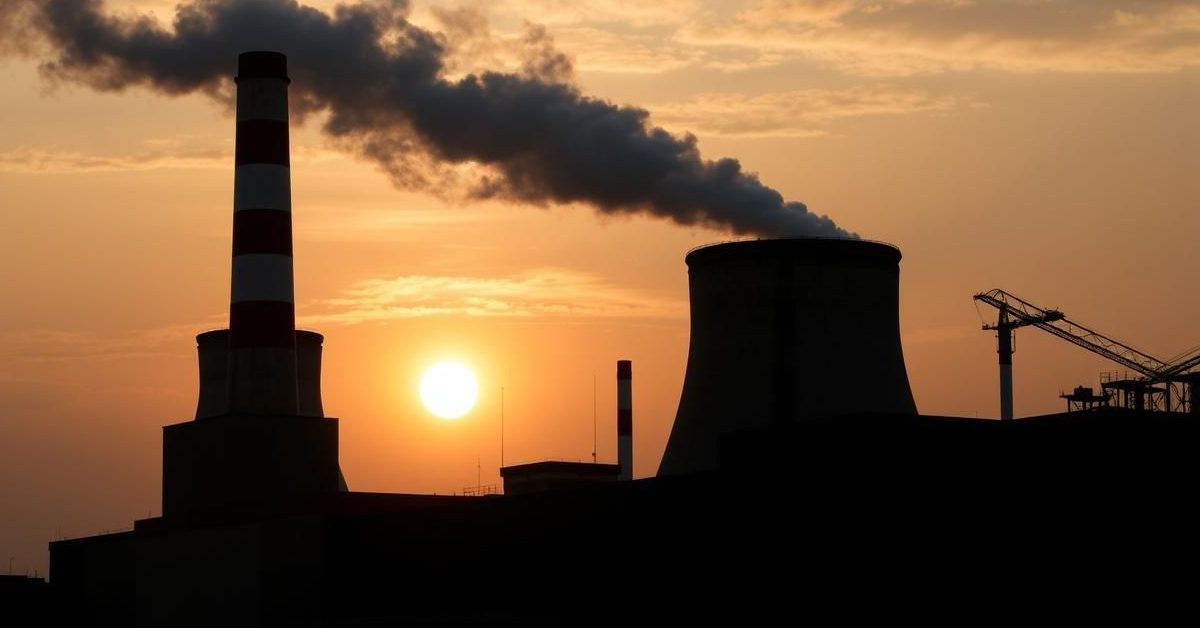India is grappling with significant challenges, from improving air quality by managing emissions from coal power plants to bolstering its maritime defense capabilities with advanced deep-sea vessels.
The Cost of Dirty Air: Coal Plants and Health
Delaying the installation of anti-pollution equipment, specifically Flue Gas Desulphurisation (FGD) devices, in aging coal power plants has severe consequences. These devices are designed to remove sulphur dioxide (SO2) emissions, a major contributor to air pollution.
When SO2 is released into the atmosphere, it reacts to form fine particulate matter (PM2.5), a harmful pollutant. PM2.5 can lead to chronic illnesses such as asthma, heart attacks, bronchitis, and other respiratory issues, while direct exposure to high SO2 levels causes irritation in the eyes, throat, and lungs.
Environmentally, SO2 contributes to acid rain, which harms ecosystems. Despite emission standards set in 2015 requiring FGDs by 2017, thermal plants have received multiple extensions, citing installation costs, potential power outages, and increased electricity rates as reasons for delay.
Balancing Economic Burden with Public Health
The economic burden of installing FGDs is often cited as a reason for delays. Power plants argue the high cost could lead to increased electricity prices and operational shutdowns during installation.
However, the health and environmental costs of inaction are substantial. Studies indicate that SO2 emissions from power plants travel long distances, transforming into secondary pollutants that significantly impact air quality far beyond the plant’s immediate vicinity. This suggests the long-term societal costs of health impacts and environmental damage far outweigh the upfront economic investment in pollution control.
India’s Deep-Sea Defenders: INS Nistar and Nipun
In a significant boost to India’s maritime capabilities, the Indian Navy recently commissioned INS Nistar. This is the first of two Dive Support Vessels (DSVs) ordered by the Navy, with its sister ship, INS Nipun, expected to follow soon.
These advanced DSVs are designed to facilitate deep-sea diving and undertake crucial submarine rescue missions. Their commissioning marks a pivotal step in enhancing India’s undersea operational preparedness and reinforcing its strategic maritime position in the Indian Ocean Region (IOR).
Boosting Self-Reliance and Strategic Presence
INS Nistar represents a major stride in India’s indigenous defense manufacturing. It boasts over 80% local content, with more than 120 Micro, Small, and Medium Enterprises (MSMEs) contributing to its creation, making it India’s first domestically designed and built diving support and submarine rescue vehicle.
Larger and more capable than its predecessor, the new Nistar features a specialized onboard diving complex, including air and saturation diving equipment, remotely operated vehicles (ROVs), and side-scan sonars. It also serves as the mothership for an advanced Deep Submergence Rescue Vehicle (DSRV) and includes extensive medical facilities, critical for its operational tasks.
Strategic Significance in the Indian Ocean Region
The induction of INS Nistar, along with the upcoming INS Nipun, significantly enhances the Indian Navy’s deep-sea capabilities. Nistar, based in Visakhapatnam, will cover the Eastern Seaboard, while Nipun, based in Mumbai, will cover the Western Seaboard, ensuring a robust dual-coast operational posture.
This dual deployment allows the Navy to respond swiftly to underwater emergencies and maintain a strong presence across the vast Indian Ocean Region, securing critical maritime interests and reinforcing India’s strategic influence.
- Delayed anti-pollution measures in coal plants lead to severe health and environmental impacts from SO2 emissions.
- The long-term costs of pollution likely outweigh the economic burden of installing Flue Gas Desulphurisation (FGD) devices.
- INS Nistar and INS Nipun are advanced, indigenously built Dive Support Vessels (DSVs) crucial for deep-sea diving and submarine rescue.
- Their deployment strengthens India’s maritime security posture and operational readiness across the Indian Ocean Region.
These developments highlight India’s dual focus on mitigating environmental challenges and strengthening its strategic defense capabilities for a secure and sustainable future.















